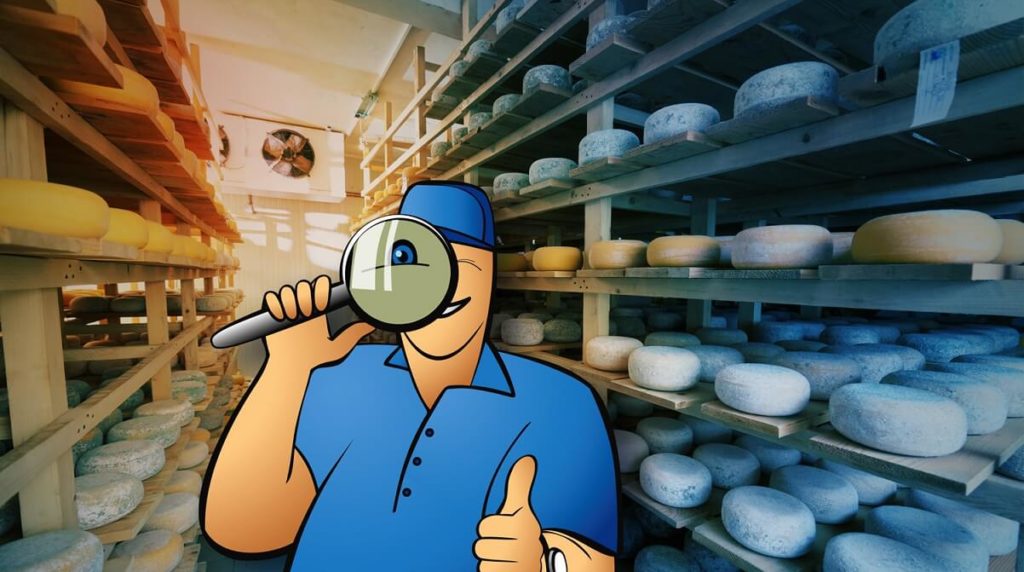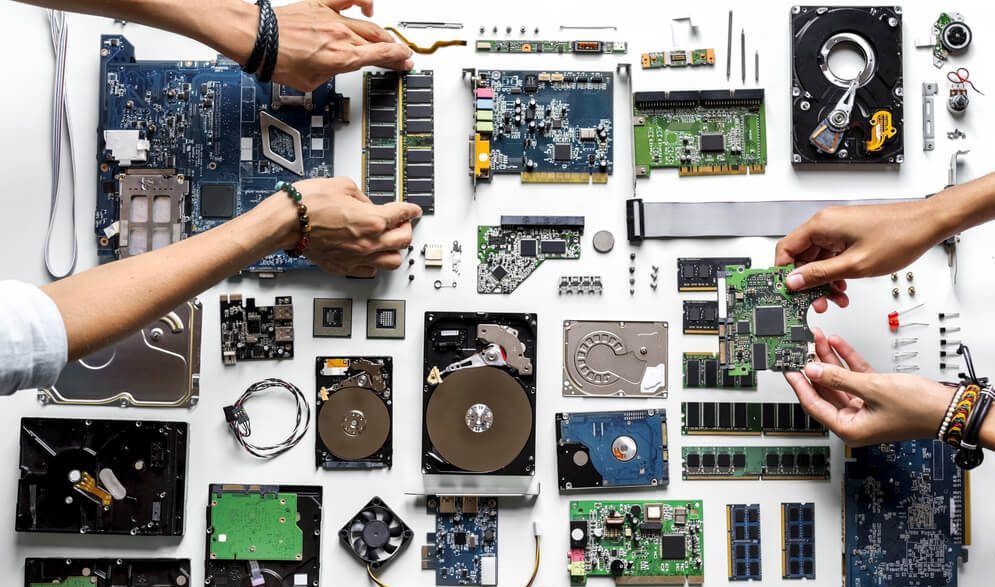Traceability in the Food Industry – Basic Requirements and Best Practices
Few manufacturing sectors are as dependent on good traceability practices as the food and beverage industry. In this article, we look at why traceability is so important for food manufacturers and which features should be foremost implemented.

You can also listen to this article:
Why is traceability important in manufacturing industries?
In manufacturing, traceability constitutes a set of practices that are aimed at increasing visibility and control over all stages of the manufacturing process. Traceability means ensuring that every item in the supply chain along with every action concerning that item leaves a verifiable trail. This is important for many reasons, chief among which are compliance and accountability, though there are other reasons as well. Properly implemented traceability measures can significantly boost the efficiency of inventory and supply chain management practices and the whole manufacturing operation writ large. Increased efficiency in turn translates into money saved and business opportunities gained.
Compliance
In the case of compliance, traceability is a crucial prerequisite for operating in certain highly regulated markets where matters of public health, security, and other public interests need to be assured. The food and agriculture industry constitutes such a sector, but there are many others like pharmaceuticals, automotive, aerospace, etc. In all of these, national, regional, and international governing bodies impose stringent requirements that manufacturers need to adhere to in order to conduct business. Traceability is often on top of the list of these legal requirements as it is necessary to enable policymakers to gain a systematic view into the supply chain.
Accountability
The other big reason is accountability. In the modern global marketplace, supply chains can penetrate many borders and stretch across continents. Products may often pass through the hands of hundreds of intermediaries and vendors in their journey from raw materials to finished goods. With this level of complexity, things can and inevitably do go wrong. When that happens, it is in everyone’s best interest to be able to pinpoint where the fault lies, who is responsible for it, and how to remedy the situation without incurring collateral damage to the supply chain and market. Traceability thus works as a safeguard for manufacturers, end consumers, as well as policymakers.
Read more: What is Traceability and How to Achieve it?
Basic requirements for the food industry
Compliance with traceability requirements can be a complex legal and logistical undertaking for manufacturers, depending on the foodstuffs they produce and the markets they wish to conduct business in. This has become especially exacerbated since the COVID-19 pandemic as legislators incorporate new measures from lessons learned. Societies are constantly tackling other challenges to food security as well, brought on by climate change, political conflicts, the increasing mobility of the global population, etc. Staying compliant as global markets adopt new solutions and introduce new legislation make these difficult times for food manufacturers.
Different legislators have set up different approaches as to how tracking and tracing should be conducted, which types of items and processes are required to be tracked at which points in the supply chain, etc. Governing bodies mostly impose traceability requirements to facilitate and enact the withdrawal of faulty products, provide consumers with information on the origin and quality of foodstuffs, and determine responsibility. It is near impossible to provide a comprehensive list of traceability requirements in the food industry writ large because the level of complexity of modern supply chains and the number of interested parties can be staggering. A manufacturer should therefore always thoroughly acquaint themselves with local and regional legislation before entering a new market.
Two examples of legislators’ traceability requirements.
- For producers active in the EU, The European Commission proceeds from a rule of “one step forward – one step back,” among other guidelines. The incentive requires food operators to have in place a system that enables them to always identify key information – receipts for when produce changes hands, confirmations of raw material origins, etc. – of both their immediate suppliers and customers. This simplifies the tracking process and enables shared responsibility to assure the integrity of the supply chain.
- In the USA, The FDA is setting up a new system of traceability measures based on two metrics – Critical Tracking Events (CTEs) – steps in the supply chain where tracking should be implemented, and Key Data Elements (KDEs) – rules on what information to track. CTEs include Growing, Receiving, Transforming, Creating, and Shipping. Their corresponding KDEs range from having to provide lot codes and location data for food and ingredient origin, to requiring the transporter’s contact information, storage and production facilities credentials, etc.
Essential traceability functions for food manufacturers
Next, let us take a quick look at some essential traceability functions necessary for food manufacturers.
- Serial number, batch, and lot tracking. Tracking raw materials, components, and finished goods by serial number, batch, or lot number is the most essential traceability feature for almost any use case. It usually makes up the core of the traceability system as well as enables other inventory management functions. Whereas serial numbers are generally assigned per individual item, lot and batch numbers are assigned to groups of similar items that are produced or procured together. In food manufacturing, the latter are thus more common. In either case, tracking by unique identification number allows logging information on all processes, movements, and operations an item or batch has passed.
- Shop floor control and internal reporting. Whereas inventory items can be tracked using unique identifiers, manufacturing processes and routing steps need to be logged to be traceable. Whenever a batch of products goes through a routing step, information on when the operation took place, who was the responsible employee, which workstation was used, etc., needs to be recorded. This helps ensure any potential issue can later be pinpointed, should need arise. Modern manufacturing execution systems include internet kiosks and per-worker production planning interfaces to enable this feature.
- Labeling and barcode systems. While most modern manufacturing operations are opting out of using physical paper trails in favor of fully digital inventory management systems, inventory items still need physical identifiers to associate the digital with the tangible. A unified labeling or barcode system is an important feature that greatly enhances traceability while also helping to organize inventory, the warehouse, and the shop floor. After all, a serial number or receipt is only useful when it can be clearly tied to a corresponding product.
- Expiry tracking and FEFO. It is crucial to keep tabs on the expiry dates of raw materials and product batches to minimize waste and efficiently organize the manufacturing operation. Product expiration has an impact on the supply chain, tracking which ensures the timely processing of goods and identifying responsible parties. More an inventory valuation method than a tracking feature, the First-Expired-First-Out (or FEFO) planning method can greatly reinforce tracking efforts for perishables manufacturers.
- Quality inspections and control. Regardless of the efficiency of the adopted inventory management or tracking system, employee training rates, or the level of organization of the shopfloor, mistakes and faulty goods are a reality. This is why routine inspections and consistent quality control are crucial for any food manufacturing operation. Inspections can be implemented as a consistent step during the reception of raw materials or the shipping of finished goods, be assigned randomly, or only for higher value and sensitive goods. Quality inspections should always be logged and leave a traceable digital paper trail. Food manufacturers should thus look toward solutions that incorporate and integrate this functionality with the larger manufacturing management solution.
There are a number of additional production management tools that can enhance traceability for food manufacturers. Examples include allergen tracking, consignment tracking, recipe and formula control, etc. When starting a food, beverage, or agricultural goods manufacturing operation, it always pays to identify mission-critical tracking features beforehand and then implement accordingly.
Food traceability best practices
Finally, let us take a look at 5 food traceability best practices that, when properly implemented, will help ensure your food manufacturing company stays compliant.
Rigorous employee training
Operating a workstation might be a relatively easy task to learn. Any employee connected to the manufacturing of food products should additionally be informed and trained on quality assurance practices, product safety, and traceability guidelines. Consider making timely and adequate training a periodic part of employee workflow. Being well-versed in traceability requirements ensures that critical procedures do not go overlooked.
Transparent communication
As we have seen, traceability can be utilized to ensure accountability and maximize the effectiveness of the supply chain. No matter the tracking systems and technologies in place to meet regulations, company policy on transparency and open communication can play a big role in displaying an image of trustworthiness to vendors and consumers. Consider making clear, open, and transparent communication with any third parties a part of company policy to enhance your traceability effort.
Human readable information
Meeting traceability requirements inevitably complicates the manufacturing process due to added steps in the workflow. Identifying and taking appropriate action on faulty items needs to be swift and accurate. Consider increasing the comprehensibility and accessibility of traceability information to help streamline processes as well as make identifying problems easier for your employees, vendors, and end consumers.
Be prepared for callbacks and RMAs
When a faulty batch is identified that has already left your facility or problems arise with a product, it is the responsibility of the producer to handle the situation. Whether you need to organize a callback, account for supply chain disruptions, or deal with legal ramifications, it pays to be prepared and have solutions ready beforehand. Think through your callback and RMA process flow. This helps ensure that the disruption incurs minimal damage to the company’s reputation and manufacturing operation.
Use dedicated food traceability software
In most cases, traceability requirements in the modern food industry are far too complicated to be handled manually with a pen-and-paper or spreadsheets approach. Implementing dedicated traceability software that automates reporting and unifies data collection is by far the most productive way for food producers to ensure high traceability standards. Food traceability software not only helps with staying compliant but can also greatly enhance a company’s inventory and production management efforts.
While many service providers specialize in offering dedicated traceability software, select manufacturing ERP solutions have comprehensive traceability functions integrated with the overall production and inventory management suite out of the box. This negates the need for developing compatibility between data systems and can hugely simplify implementation. Although ERPs are generally more expensive than stand-alone traceability software, they still ensure a much lower overall Total Cost of Ownership (TCO) compared to implementing two distinct systems and developing bespoke integrations for them. For example, MRPeasy is a flexible and affordable manufacturing ERP system that boasts full end-to-end traceability including automated reporting, a barcode system, version and quality control, RMA functionality, and comprehensive serial number and lot tracking functions.
Key takeaways
- Traceability means ensuring that every item in the supply chain along with every action concerning that item leaves a verifiable trail.
- Food traceability is a crucial prerequisite for operating in highly regulated modern markets as legislators impose strict traceability requirements to allow entry.
- Essential traceability functions for food producers include batch and lot tracking, in-house reporting, the use of labeling and barcode systems, quality inspections, and more.
- Best practices for food traceability include employee training, enabling human-readable information and transparent communication, having solutions for callbacks and RMAs at the ready, and implementing capable traceability software.
- Manufacturing ERPs with built-in traceability functions usually ensure a much lower overall TCO compared with having to implement and integrate stand-alone traceability software with a production management system.
You may also like: Quality Control in Manufacturing – An Introduction




